News
Building a Brand: The Building Blocks of Success
Building a Brand – The Building Blocks of Success
We all know that there is no recipe for success when it comes to business, especially when there are so many internal and external factors that can either make or break a business. We cannot prepare ourselves for all eventualities but there are a number of steps that can be taken to minimise risks. When we think of large successful businesses, the key players that come to mind are Coca Cola, McDonald’s and Apple. But what have all of these companies got in common that have made them so successful? Strong branding!
Branding is bandied about a lot when it comes to talking about successful businesses. You brand represents everything about your business and it resonates with your customers and prospects. With this in mind, it is vital that you get the basic building blocks right. But what are the building blocks that have enabled these brands to triumph over others?
Building Block #1: Clear Strategy
Before launching any brand, you have to ensure that you have established your brand foundation. Your brand foundation can be identified by answering a number of questions:
What are our core values? What do we believe in? How do we want our customers to perceive us? What is our core messaging and visual identity? What do we want our company to represent?
After answering all of these questions, you will have a clearer understanding of what you foundation strategy should be. These foundation principles could be a list or statement, or a selection of carefully selected words. They essentially need to be referenced to by everyone who touches your brand internally, at every stage of any business decision making process. Also, by understanding who your ideal customers are, you can ensure that you’re building a brand that aligns with their wants and needs.
Building Block #2: A Strong Logo
This is a given really but once you have established your foundation, you need to address your visual elements. Designing a logo is no easy task as there are so many components to consider. To put it as simply as possible though, make it unique, make it adaptable, make it timeless but most of all, make it memorable.
This is the first element that the public will probably come into contact with so it needs to be striking. Remember though, your logo will set the standard for all your marketing collateral so it needs to be adaptable. Logos need to translate across different mediums but still evoke the same meaning.
Never underestimate the power of your logo either. Throughout a single company’s history, various logos serve as indicators of values, loyalty and togetherness. One of the most iconic brand logos of all time is the Nike “swoosh”. The logo was introduced in 1971 and since its introduction, it has only undergone four revisions but the Nike “Swoosh” has remained. It has now gone on to become the most iconic images in the world, so much so that in 1995 the company chose to remove the brand name of the original design, leaving the “Swoosh” as the sole symbol of the company.
Building Block #3: Guidelines
Once you’ve established your identity and you have a logo to match it, you need to ensure your other visual elements match the image and personality of your brand. This is essential as it helps develop a sense of familiarity for your customers. Fonts and colours which will be heavily influenced by your logo will have a big impact of your branded marketing materials. You need to consider how your fonts and colours portray your brand.
For example, if your brand is corporate, then your font should be slick, easy to read and professional. No Comic Sans please. However, if your brand is a bit more fun, then you can use a font that is energetic and slightly more elaborate.
Research has shown that colour also plays a vital role in the perception of brands. This is why it is so important in understanding your ideal customer. If your customers are looking for a brand that is exciting, you may choose to use red in your marketing collateral. Or if you want to convey sophistication, you may look to use purple. There are no clear cut guidelines when it comes to colour but when it comes to choosing colours, you must test. You cannot know how your audience will respond to your colours in your content and layout without testing to determine which colour combinations work best.
Your guidelines will also cover elements such as writing guidelines, web design and print design. Once you have a set of brand guidelines, as long as they have been clearly established, it should help everyone from your team to your suppliers designing your marketing material make sure that everything is consistent and looking like it’s from the same company.
Building Block #4: Tone of Voice
Your tone of voice is not what you say, but how you say it. In relationship to branding, it embodies and expresses your personality and reflects the overarching foundation. The words you use on your website and in your marketing collateral can define how people perceive your business.
When establishing your tone of voice, you need to think carefully about whom you are talking to. Do you want to appear casual and friendly or formal and sharp? Your tone of voice needs to be distinctive and recognisable. Carefully selected words can heavily influence customers and by picking a voice that fits your brand and culture can make you more memorable to customers.
One brand that hit the nail on the head in their very early days was Innocent drinks. Their branding is often held up as a shining example of how to get copywriting and marketing right. One of the most significant things about Innocent’s brand voice is that it is relatively informal and friendly. Instead of coming across as a company, it sounds more like a friend who has just made you are smoothie. If you have a look across any of their customer touch points though, you will see that this friendly, off-the-wall formula has been used across all of their content. By having this consistency, consumers are instantly able to recognise a marketing message from Innocent.
One of the most important lessons that can be learnt from Innocent is that success comes from building a unique brand voice. By developing this distinct tone that your customers are comfortable with, your customers are more likely to return to your website or connect with you digitally.
Building Block #5: Consistency
Consistency is key for your business and does a multitude of things for your brand. It can contribute to generating trust, attracting more customers and also creating a professional feel across the business. Ultimately, consistency contributes to brand recognition, so you need to make sure all your marketing elements and messaging is cohesive. Not only does this help strengthen your brand, but it also drives positive sentiment and trust in consumers which ultimately leads to brand loyalty and lifelong customers.
New and returning customers are heavily influenced by the stability that is associated with a solid reputation, and this can only be perpetuated by consistent branding. By keeping a tight rein on brand consistency, marketers are able to drive customer perception for the onset of the engagement all the way through the buyer decision process.
We have seen the power of consistent branding in recent years with Apple. In the early stages, Apple was able to establish an identity that meets their needs, and they have stuck with it. Changing the look or approach of the Apple brand could easily undermine the consumers’ understanding of who Apple are as a company so Apple consistently places a lower case “i” on new digital products – the iPhone, iPad, iPod, iWatch. This ensures that consumers can easily identify a new product as coming from Apple, even if they haven’t heard from them. As a result, Apple is now the world’s most valuable technology brand, and has been the front-runner for the past six, consecutive years.
Apple’s global domination continues, and although their brand success would be hard to replicate, their strategy and tactics are easily transferable to any brand. Unfortunately it won’t come easily but the consequence of brand consistency is so crucial to a brand’s success, it’s worth investing the time.
Building Block #6: Brand Centurion
Consistency is the key theme that runs throughout all of the points above and any brand manager will tell you how vital it is for a brand to succeed. One of the biggest tasks faced by brand managers though is keeping their marketing consistent. With Brand Centurion, many of the daily struggles are alleviated by providing organisations with one, easy-to-use, powerful asset management tool. Brand Centurion automates all the demanding creation and distribution jobs and ensures that all marketing collateral is consistent every single time.
Written by Liam Beauchamp for Burst Digital – 30/08/2016
If you’re interested in developing your brand, call us today and up your marketing game!







